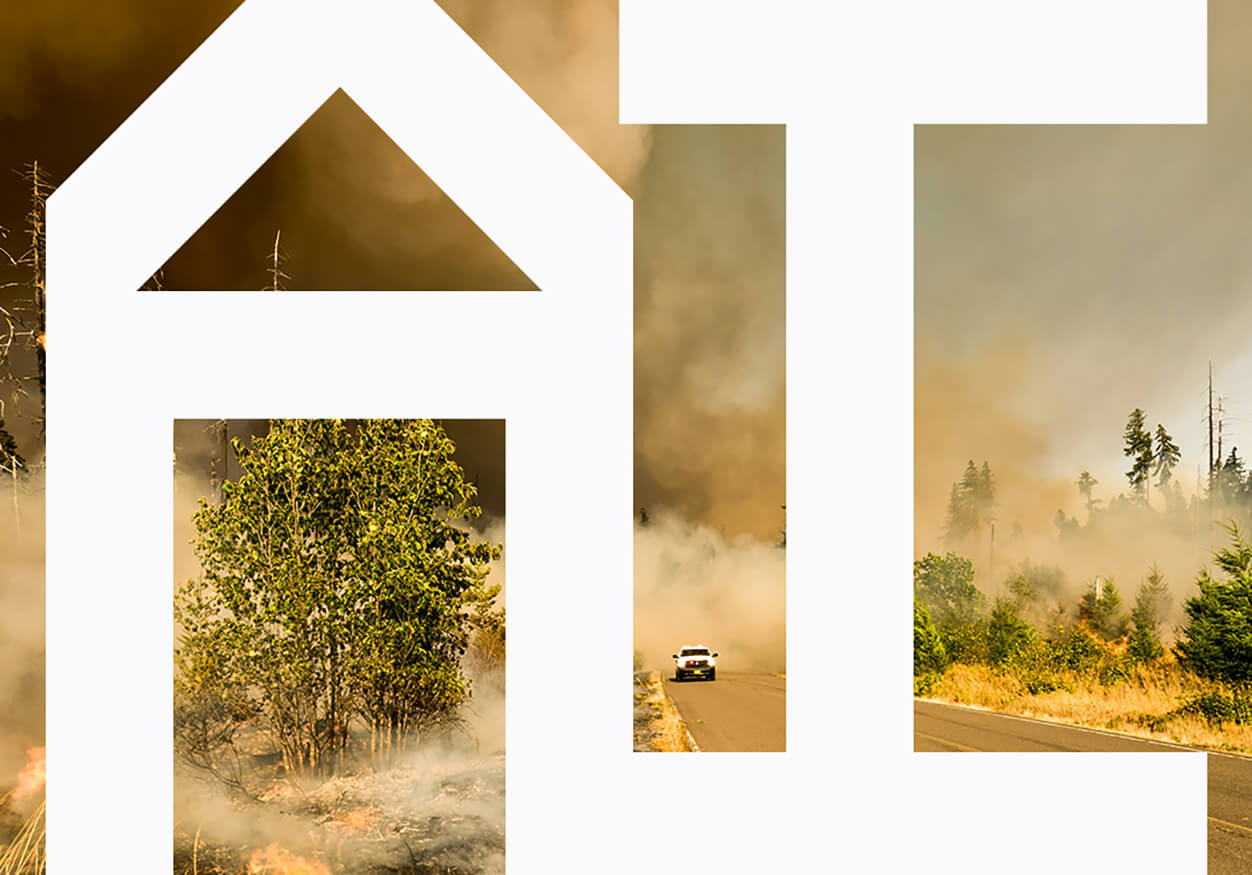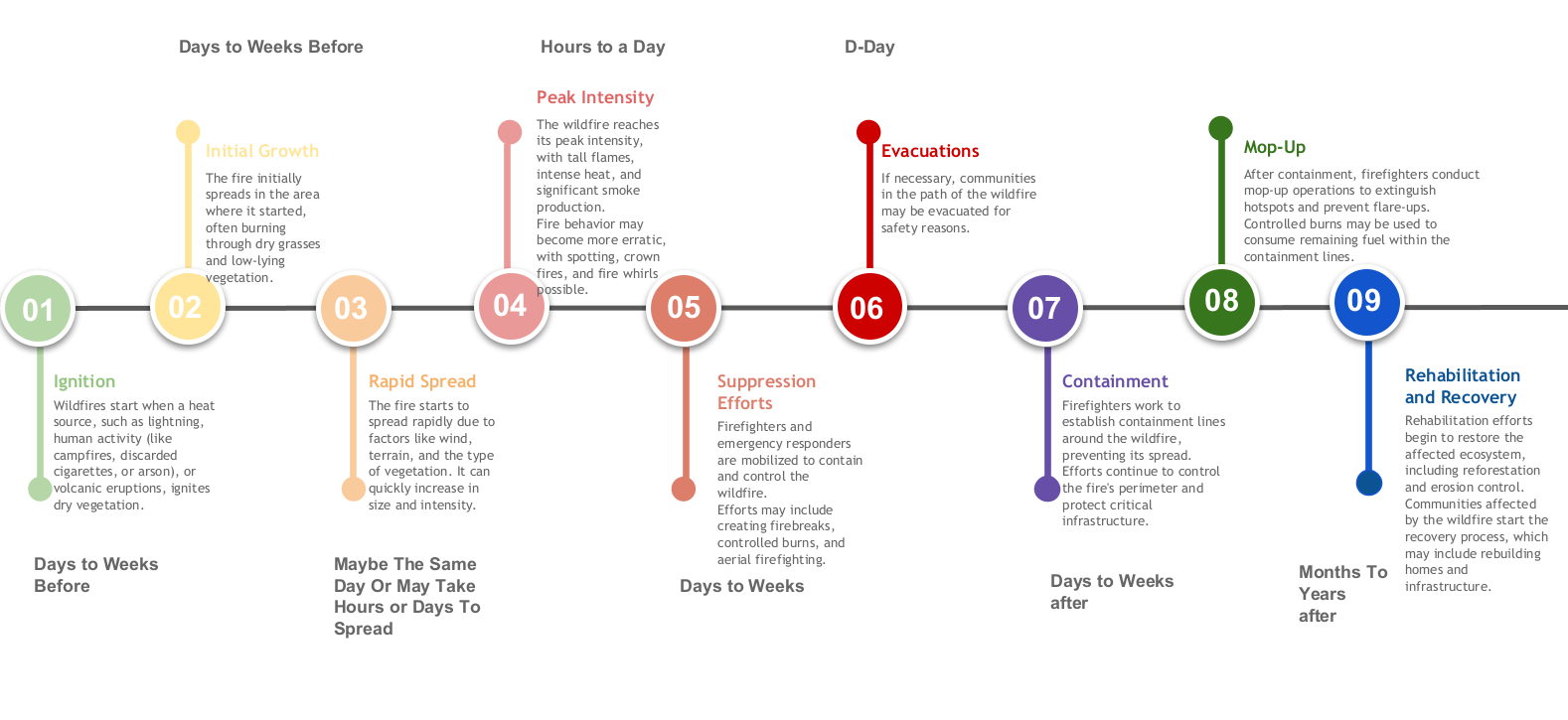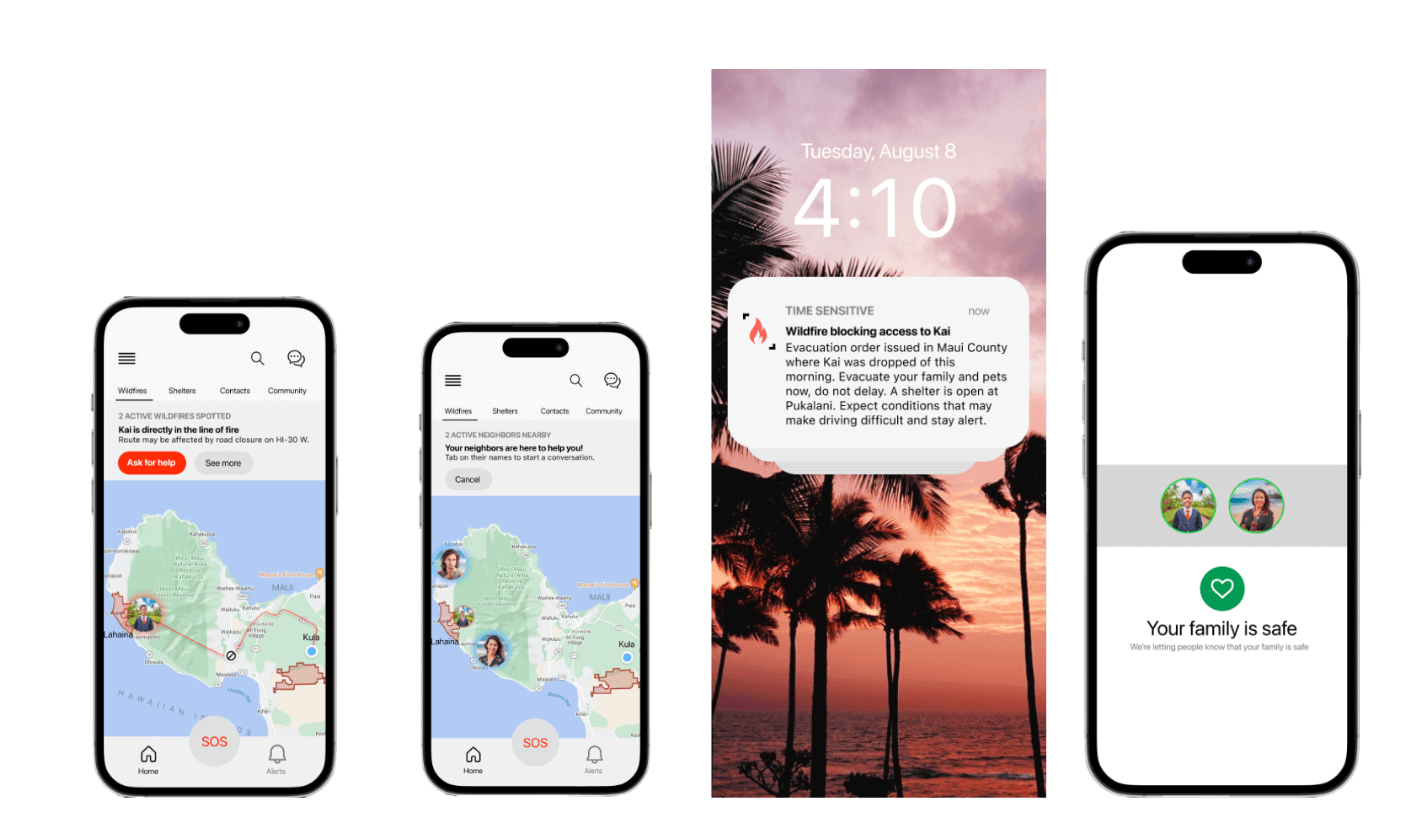Improving Wildfire Communications and Outcomes with Generative AI
By Stephanie Hlywak
February 23, 2024

Since 1983, the National Interagency Fire Center (NIFC) has documented an average of approximately 70,000 wildfires per year in the United States. And the fires are getting larger—affecting more land, people, and wildlife. According to NIFC data, of the 10 years with the largest acreage burned, all have occurred since 2004, and they coincide with many of the warmest years on record nationwide. Moreover, the peak of the US wildfire season is occurring earlier in the year in July: an average of 1.7 million acres burned in July of each year from 2002 to 2020.
Wildfires can destroy habitats, decimate hometowns, and take a significant human toll. Given the stakes—and the likelihood that these natural disasters will continue to be an increasing threat in years to come—what role can technology play in better preparing and warning people about fire risks?
These are the questions that students Natthaporn Naktnasukanjn (MDes 2024), Jasmine Sarin (MDes 2024), and Gayatri Shah (MDes 2024) posed in Jennifer Levin and JoEllen Kames’s fall Interaction Design Workshop. Could AI be harnessed to create a multimodal platform that provides real-time updates and interactive maps to ensure users have access to the things they need in an emergency, such as supplies, safe evacuation plans, and communication with loved ones?
Understanding the Landscape: Timeline of a Wildfire
We are used to seeing prediction and event modeling for things like hurricanes from federal agencies such as the National Oceanic and Atmospheric Administration and the National Hurricane Center. But this kind of sophisticated computing has traditionally been too expensive for all but the largest and best-funded institutions. That’s changing, thanks to the ubiquity and affordability of cloud computing as well as access to vast stores of data that will make predictive AI for disaster preparedness more accessible than ever.
The designers saw an opportunity to integrate AI to assist people facing wildfires make complex decisions and ultimately save more lives. But first, they needed to understand how humans behave in wildfires.

To understand where interventions can occur, ID students needed to understand the timeline of a typical fire.
The designers conducted extensive interviews with people in fire-prone areas and discovered there is little consistency in people’s responses to wildfires. This may be because there are also few if any dedicated applications or platforms for wildfire preparedness, especially in areas prone to wildfires, intended for individual users. Most generative AI platforms and applications currently on the market are utilized by the public sector and focus on using AI to accurately detect smoke and potential wildfire sources.
Instead, residents are turning to social media and community-specific applications in the face of wildfires. These users tend to be familiar with the area, aware of available resources, and possess proficient map-reading skills to easily discern evacuation routes. What’s missing appears to be access to reliable real-time information. Because governmental agencies are slow to update websites or social feeds, people turn to their neighbors first for information.
Applying AI to Wildfire Prediction and Response
Based on their understanding of the current state of the market, the designers prototyped DisastAI—a comprehensive solution that seamlessly integrates resource management, a robust communication and alerts system, and intuitive navigational assistance.
Featuring a user-friendly interface that facilitates collaboration between humans and AI for wildfire preparedness, DisastAI provides access to real-time updates and clear, accurate information by analyzing crowdsourced data from social media and verifying it with data from various governmental agencies.

Users can expect personalized alerts related to their specific situation.
Users and Their Needs
Different kinds of people need different kinds of information. Understanding user personas also enables the platform to provide personalized recommendations and predictions to its users, and streamlining the way people access information allows them to have enough data to make better-informed decisions.
The students sketched out three personas to ensure the platform could meet each of their needs.

Maya, 35, Mother of two kids
An Individual
Maya, 35, Mother of Two Kids
When I see a wildfire forecast, I want real-time updates, so that I know how best to plan for the safety of myself and my family early on.

Saloni, 28, Disaster relief coordinator
A Volunteer
Saloni, 28, Disaster Relief Coordinator
When a natural disaster strikes, I provide critical support and relief to those affected by the disaster, so that I am able to ensure their safety, wellbeing, and eventual recovery.

Shinichi, 42, Business owner
A Business Owner
Shinichi, 42, Business Owner
When a natural disaster strikes, I need to ensure my safety, protect my assets, and maintain or rapidly restore my business operations so that I am able to minimize financial losses and maintain their livelihood.
Filling a Major Gap in Disaster Planning
Ultimately, the students imagine DisastAI serving as a guiding beacon in times of crisis—prompting actions, safeguarding businesses, and saving lives. It will stand, they hope, as the first signal that swiftly alerts and urges communities to plan, prepare, and evacuate in the face of imminent danger.
DisastAI also functions as a collaborator, they say, identifying key staff and personnel, recognizing the importance of their roles, and allowing for flexible integration of expert advice. It fosters a collective effort, where expertise merges with adaptability, ensuring comprehensive, adaptable plans that prioritize safety and resilience.
Lastly, DisastAI navigates individuals and organizations through the chaos, providing clear, concise directives on specific tasks and crucial guidance. It steers the course, directing people towards imperative actions, and ensuring they know precisely what needs to be done to protect themselves, their assets, and their communities, enabling them to make better-informed decisions.
The students plan to launch a pilot program of the platform’s core features to measure its impact in the real world both before and during wildfires. They believe DisastAI will potentially benefit many people if their design is supported or adopted by government agencies or large infrastructure and/or technology companies like Google. In doing so, the platform can continuously improve its AI predictions through multiple trusted sources of information and crowdsourcing for the benefit of millions of people in potential wildfire areas.